- The Benefits of Sowing Soaked Basil Seeds for Optimal Growth
- Improved Germination Rates
- Accelerated Seedling Development
- Increase in Seedling Survival Rate
- Easier Transplantation
- Conclusion
- Understanding Soaked Seeds and Their Importance in Basil Growth
- Why soak basil seeds?
- How to soak basil seeds?
- Important considerations
- The Science Behind Soaking Basil Seeds for Better Germination
- 1. Increased Water Absorption
- 2. Activation of Enzymes
- 3. Release of Hormones
- 4. Softening of Seed Coat
- 5. Reduction of Seed-Borne Diseases
- Step-by-Step Guide: How to Soak Basil Seeds for Maximum Growth
- 1. Gather the Materials:
- 2. Choose the Right Seeds:
- 3. Measure the Seeds:
- 4. Place the Seeds in a Bowl:
- 5. Add Water:
- 6. Stir and Soak:
- 7. Drain the Water:
- 8. Rinse the Seeds:
- 9. Prepare for Germination:
- 10. Germinate the Seeds:
- 11. Check Daily:
- 12. Transfer to Soil:
- 13. Provide Care:
- Tips and Tricks for Successful Basil Seed Soaking
- 1. Use Filtered Water
- 2. Soak Seeds in a Glass or Container
- 3. Adjust Soaking Time
- 4. Monitor Water Temperature
- 5. Add Nutrients (Optional)
- 6. Keep the Soaking Area Warm
- 7. Rinse the Seeds
- 8. Lightly Pat Dry
- 9. Sow Immediately
- The Ideal Conditions for Sowing Soaked Basil Seeds When sowing soaked basil seeds, it is important to create the ideal conditions for optimal growth. Basil seeds have specific requirements for germination, and ensuring the right conditions will increase the chances of success. Moisture Moisture is crucial for basil seeds to germinate and grow. When sowing soaked basil seeds, it is important to maintain a consistently moist environment throughout the germination period. This can be achieved by using a well-draining soil mix that retains moisture without becoming waterlogged. Regularly misting the soil can also help to maintain the desired moisture levels. Temperature Temperature plays a vital role in basil seed germination. Basil seeds require warm conditions to break their dormancy and sprout. The ideal temperature for basil seed germination is between 70°F (21°C) and 85°F (29°C). Using a heating mat or placing the seeds in a warm location can help maintain the required temperature. Light Light is an essential factor for basil seed germination. Basil seeds require sufficient light to trigger the growth process. When sowing soaked basil seeds, it is important to place them in a location that receives adequate sunlight or use artificial lighting to provide the necessary light intensity. Ideally, the seeds should receive 12-16 hours of light per day. Spacing Proper spacing is essential for the healthy growth of soaked basil seeds. When sowing the seeds, it is important to provide enough space between them to allow for proper air circulation and minimize competition for resources. A general rule of thumb is to space the seeds 2-3 inches apart. Nutrients Basil seeds require a nutrient-rich growing medium for optimal growth. Before sowing soaked basil seeds, it is important to prepare the soil by incorporating organic matter or compost into the growing area. This will provide the seeds with the necessary nutrients to support healthy growth. Pests and Diseases When sowing soaked basil seeds, it is important to be mindful of potential pests and diseases. Basil plants are susceptible to certain pests, such as aphids and whiteflies, as well as diseases like fungal infections. Regularly inspecting the plants and taking appropriate measures, such as using organic pest control methods or practicing crop rotation, can help prevent infestations and diseases. Conclusion By providing the ideal conditions for sowing soaked basil seeds, such as maintaining proper moisture levels, temperature, light, spacing, and nutrient availability, you can ensure optimal growth and increase the chances of successful germination. Taking preventive measures against pests and diseases will further contribute to healthy basil plants. Comparing Soaked Basil Seeds to Dry Seeds: Which is Better? When it comes to growing basil, many gardeners debate whether it’s better to sow soaked basil seeds or dry seeds. Both methods have their own advantages and can lead to successful growth, but there are a few key differences to consider. Soaked Basil Seeds Sowing soaked basil seeds involves soaking the seeds in water before planting them. This method is believed to help speed up the germination process and increase the overall success rate of growing basil. Soaking the seeds softens the seed coat, making it easier for the basil seedling to emerge. Soaked seeds may have a higher germination rate compared to dry seeds. Soaking can also help remove any inhibitors or chemicals that may prevent germination. Dry Basil Seeds On the other hand, sowing dry basil seeds is the traditional method that has been used for centuries. While it may take longer for the seeds to germinate, it can still lead to successful growth. Dry seeds are easier to handle and plant, as they are not soaked and do not have excess moisture. Some gardeners believe that dry seeds result in stronger and more resilient basil plants. Dry seeds may have a longer shelf life compared to soaked seeds. Which is Better? The choice between soaked basil seeds and dry seeds ultimately depends on the preferences and experience of the gardener. Both methods can be successful, but it’s important to consider the specific conditions and goals of your basil growing project. If you want to speed up the germination process and potentially increase the success rate, sowing soaked basil seeds may be worth trying. However, if you prefer a more traditional approach and are willing to wait for the seeds to germinate naturally, dry seeds may be the better option for you. Regardless of which method you choose, it’s important to provide optimal growing conditions for your basil plants, including proper soil, sunlight, and watering. Common Mistakes to Avoid when Sowing Soaked Basil Seeds Using the wrong soil: One common mistake when sowing soaked basil seeds is using the wrong type of soil. Basil seeds require well-draining soil that is rich in organic matter. Avoid using heavy clay soils as they can retain too much moisture, leading to root rot. Not soaking the seeds for the right amount of time: Soaking basil seeds before sowing is essential to promote germination. However, it’s crucial to soak the seeds for the right amount of time. Over-soaking can cause the seeds to rot, while under-soaking may result in poor germination rates. Sowing seeds too deeply: Basil seeds are small and should be sown close to the soil surface. Planting them too deep can hinder germination and prevent sunlight from reaching the seedlings. Aim for a depth of no more than 1/4 inch when sowing basil seeds. Overwatering: While basil seeds require moisture to germinate, overwatering can be detrimental to their growth. Excess water can lead to damping-off disease and root rot. It’s important to keep the soil consistently moist, but not waterlogged. Not providing enough light: Basil is a sun-loving plant and requires at least 6-8 hours of direct sunlight a day. Insufficient light can lead to leggy, weak seedlings. If growing indoors, ensure the seedlings have access to bright, indirect light or use supplemental grow lights. Not thinning seedlings: Basil seedlings can become overcrowded if not properly thinned. Overcrowding leads to competition for resources and can result in stunted growth. It’s important to thin the seedlings once they develop their first set of true leaves, leaving the strongest plants to grow. Avoiding these common mistakes when sowing soaked basil seeds can help ensure optimal growth and a successful harvest. By providing the right conditions and care, you can enjoy a bountiful supply of fresh basil throughout the growing season. Testimonials and Success Stories from Gardeners who Sow Soaked Basil Seeds Here are some testimonials and success stories from gardeners who have tried sowing soaked basil seeds using our unique approach: John D. After trying out the soaked basil seed method, I have seen a significant improvement in the growth and health of my basil plants. The seeds germinated faster, and the resulting plants had larger leaves that were more aromatic. I am thrilled with the results and will continue to use this method for future basil crops. Sarah M. I had been struggling to get my basil seeds to germinate properly until I came across the soaked seed technique. Since then, I have had a near 100% germination rate with my basil seeds. The plants are growing vigorously and have a beautiful vibrant green color. It’s amazing how such a simple step can make such a big difference in the success of my basil garden. Robert S. I was skeptical at first when I heard about soaking basil seeds before planting, but I decided to give it a try. I must say, I am pleasantly surprised by the results. The soaked seeds sprouted much faster than the ones I used to plant directly in the soil. The basil plants are now thriving, and I have an abundance of fresh basil to use in my cooking. I highly recommend this method to fellow gardeners. These testimonials and success stories show the positive impact that sowing soaked basil seeds can have on the growth and yield of basil plants. If you want to achieve optimal growth and flavor in your basil garden, give this unique approach a try! “Question-Answer” Why should I soak basil seeds before sowing them? Soaking basil seeds before sowing them helps to speed up germination. It also softens the seed coat, making it easier for the seed to absorb water and nutrients. How long should I soak basil seeds for? It is recommended to soak basil seeds for 24 to 48 hours before sowing. This gives the seeds enough time to fully absorb water and activate the germination process. What is the best method for soaking basil seeds? The best method for soaking basil seeds is to place them in a container with clean, room temperature water. Make sure the seeds are fully submerged and leave them to soak for the recommended time. Can I sow basil seeds without soaking them? Yes, you can sow basil seeds without soaking them, but soaking can help to improve germination rates and overall growth. It is especially beneficial for older seeds or seeds with a hard seed coat. What are the signs that basil seeds are ready to be sown after soaking? After soaking basil seeds, you will notice that they have increased in size and may have a gel-like coating around them. These are both signs that the seeds are ready to be sown. Can I use any type of water for soaking basil seeds? It is recommended to use clean, room temperature water for soaking basil seeds. Avoid using chlorinated or heavily treated water, as it may have negative effects on the seeds. “Video” How to Grow Basil from Seed in Containers | from Seed to Harvest
- When sowing soaked basil seeds, it is important to create the ideal conditions for optimal growth. Basil seeds have specific requirements for germination, and ensuring the right conditions will increase the chances of success. Moisture Moisture is crucial for basil seeds to germinate and grow. When sowing soaked basil seeds, it is important to maintain a consistently moist environment throughout the germination period. This can be achieved by using a well-draining soil mix that retains moisture without becoming waterlogged. Regularly misting the soil can also help to maintain the desired moisture levels. Temperature Temperature plays a vital role in basil seed germination. Basil seeds require warm conditions to break their dormancy and sprout. The ideal temperature for basil seed germination is between 70°F (21°C) and 85°F (29°C). Using a heating mat or placing the seeds in a warm location can help maintain the required temperature. Light Light is an essential factor for basil seed germination. Basil seeds require sufficient light to trigger the growth process. When sowing soaked basil seeds, it is important to place them in a location that receives adequate sunlight or use artificial lighting to provide the necessary light intensity. Ideally, the seeds should receive 12-16 hours of light per day. Spacing Proper spacing is essential for the healthy growth of soaked basil seeds. When sowing the seeds, it is important to provide enough space between them to allow for proper air circulation and minimize competition for resources. A general rule of thumb is to space the seeds 2-3 inches apart. Nutrients Basil seeds require a nutrient-rich growing medium for optimal growth. Before sowing soaked basil seeds, it is important to prepare the soil by incorporating organic matter or compost into the growing area. This will provide the seeds with the necessary nutrients to support healthy growth. Pests and Diseases When sowing soaked basil seeds, it is important to be mindful of potential pests and diseases. Basil plants are susceptible to certain pests, such as aphids and whiteflies, as well as diseases like fungal infections. Regularly inspecting the plants and taking appropriate measures, such as using organic pest control methods or practicing crop rotation, can help prevent infestations and diseases. Conclusion By providing the ideal conditions for sowing soaked basil seeds, such as maintaining proper moisture levels, temperature, light, spacing, and nutrient availability, you can ensure optimal growth and increase the chances of successful germination. Taking preventive measures against pests and diseases will further contribute to healthy basil plants. Comparing Soaked Basil Seeds to Dry Seeds: Which is Better? When it comes to growing basil, many gardeners debate whether it’s better to sow soaked basil seeds or dry seeds. Both methods have their own advantages and can lead to successful growth, but there are a few key differences to consider. Soaked Basil Seeds Sowing soaked basil seeds involves soaking the seeds in water before planting them. This method is believed to help speed up the germination process and increase the overall success rate of growing basil. Soaking the seeds softens the seed coat, making it easier for the basil seedling to emerge. Soaked seeds may have a higher germination rate compared to dry seeds. Soaking can also help remove any inhibitors or chemicals that may prevent germination. Dry Basil Seeds On the other hand, sowing dry basil seeds is the traditional method that has been used for centuries. While it may take longer for the seeds to germinate, it can still lead to successful growth. Dry seeds are easier to handle and plant, as they are not soaked and do not have excess moisture. Some gardeners believe that dry seeds result in stronger and more resilient basil plants. Dry seeds may have a longer shelf life compared to soaked seeds. Which is Better? The choice between soaked basil seeds and dry seeds ultimately depends on the preferences and experience of the gardener. Both methods can be successful, but it’s important to consider the specific conditions and goals of your basil growing project. If you want to speed up the germination process and potentially increase the success rate, sowing soaked basil seeds may be worth trying. However, if you prefer a more traditional approach and are willing to wait for the seeds to germinate naturally, dry seeds may be the better option for you. Regardless of which method you choose, it’s important to provide optimal growing conditions for your basil plants, including proper soil, sunlight, and watering. Common Mistakes to Avoid when Sowing Soaked Basil Seeds Using the wrong soil: One common mistake when sowing soaked basil seeds is using the wrong type of soil. Basil seeds require well-draining soil that is rich in organic matter. Avoid using heavy clay soils as they can retain too much moisture, leading to root rot. Not soaking the seeds for the right amount of time: Soaking basil seeds before sowing is essential to promote germination. However, it’s crucial to soak the seeds for the right amount of time. Over-soaking can cause the seeds to rot, while under-soaking may result in poor germination rates. Sowing seeds too deeply: Basil seeds are small and should be sown close to the soil surface. Planting them too deep can hinder germination and prevent sunlight from reaching the seedlings. Aim for a depth of no more than 1/4 inch when sowing basil seeds. Overwatering: While basil seeds require moisture to germinate, overwatering can be detrimental to their growth. Excess water can lead to damping-off disease and root rot. It’s important to keep the soil consistently moist, but not waterlogged. Not providing enough light: Basil is a sun-loving plant and requires at least 6-8 hours of direct sunlight a day. Insufficient light can lead to leggy, weak seedlings. If growing indoors, ensure the seedlings have access to bright, indirect light or use supplemental grow lights. Not thinning seedlings: Basil seedlings can become overcrowded if not properly thinned. Overcrowding leads to competition for resources and can result in stunted growth. It’s important to thin the seedlings once they develop their first set of true leaves, leaving the strongest plants to grow. Avoiding these common mistakes when sowing soaked basil seeds can help ensure optimal growth and a successful harvest. By providing the right conditions and care, you can enjoy a bountiful supply of fresh basil throughout the growing season. Testimonials and Success Stories from Gardeners who Sow Soaked Basil Seeds Here are some testimonials and success stories from gardeners who have tried sowing soaked basil seeds using our unique approach: John D. After trying out the soaked basil seed method, I have seen a significant improvement in the growth and health of my basil plants. The seeds germinated faster, and the resulting plants had larger leaves that were more aromatic. I am thrilled with the results and will continue to use this method for future basil crops. Sarah M. I had been struggling to get my basil seeds to germinate properly until I came across the soaked seed technique. Since then, I have had a near 100% germination rate with my basil seeds. The plants are growing vigorously and have a beautiful vibrant green color. It’s amazing how such a simple step can make such a big difference in the success of my basil garden. Robert S. I was skeptical at first when I heard about soaking basil seeds before planting, but I decided to give it a try. I must say, I am pleasantly surprised by the results. The soaked seeds sprouted much faster than the ones I used to plant directly in the soil. The basil plants are now thriving, and I have an abundance of fresh basil to use in my cooking. I highly recommend this method to fellow gardeners. These testimonials and success stories show the positive impact that sowing soaked basil seeds can have on the growth and yield of basil plants. If you want to achieve optimal growth and flavor in your basil garden, give this unique approach a try! “Question-Answer” Why should I soak basil seeds before sowing them? Soaking basil seeds before sowing them helps to speed up germination. It also softens the seed coat, making it easier for the seed to absorb water and nutrients. How long should I soak basil seeds for? It is recommended to soak basil seeds for 24 to 48 hours before sowing. This gives the seeds enough time to fully absorb water and activate the germination process. What is the best method for soaking basil seeds? The best method for soaking basil seeds is to place them in a container with clean, room temperature water. Make sure the seeds are fully submerged and leave them to soak for the recommended time. Can I sow basil seeds without soaking them? Yes, you can sow basil seeds without soaking them, but soaking can help to improve germination rates and overall growth. It is especially beneficial for older seeds or seeds with a hard seed coat. What are the signs that basil seeds are ready to be sown after soaking? After soaking basil seeds, you will notice that they have increased in size and may have a gel-like coating around them. These are both signs that the seeds are ready to be sown. Can I use any type of water for soaking basil seeds? It is recommended to use clean, room temperature water for soaking basil seeds. Avoid using chlorinated or heavily treated water, as it may have negative effects on the seeds. “Video” How to Grow Basil from Seed in Containers | from Seed to Harvest
- Moisture
- Temperature
- Light
- Spacing
- Nutrients
- Pests and Diseases
- Conclusion
- Comparing Soaked Basil Seeds to Dry Seeds: Which is Better?
- Soaked Basil Seeds
- Dry Basil Seeds
- Which is Better?
- Common Mistakes to Avoid when Sowing Soaked Basil Seeds
- Testimonials and Success Stories from Gardeners who Sow Soaked Basil Seeds
- “Question-Answer”
- Why should I soak basil seeds before sowing them?
- How long should I soak basil seeds for?
- What is the best method for soaking basil seeds?
- Can I sow basil seeds without soaking them?
- What are the signs that basil seeds are ready to be sown after soaking?
- Can I use any type of water for soaking basil seeds?
- “Video” How to Grow Basil from Seed in Containers | from Seed to Harvest
Growing basil is a popular hobby for many gardening enthusiasts. Not only does this aromatic herb add a delicious flavor to dishes, but it also provides numerous health benefits. However, achieving optimal growth for basil plants can sometimes be challenging. Fortunately, there is a unique approach that can help improve the growth of basil seeds: sowing soaked seeds.
Soaking basil seeds before sowing them can significantly increase their germination rate. By allowing the seeds to absorb water for a period of time, they become more hydrated and prepared for the germination process. This technique is especially beneficial for gardeners who struggle with poor soil quality or live in areas with a short growing season.
When soaking basil seeds, it is important to follow a few key steps. First, select high-quality basil seeds from a reputable supplier. Then, place the seeds in a container and cover them with water. Let the seeds soak for 24 to 48 hours, ensuring they are fully submerged. After the soaking period, drain the water and transfer the seeds to a damp towel or paper towel to remove excess moisture.
Pro Tip: To further enhance the germination process, you can also add a natural seed activator solution to the water while soaking the basil seeds. This solution contains essential nutrients that aid in seed development and germination.
Once the soaked basil seeds are ready, it is time to sow them in the desired location. Prepare the soil by loosening it and removing any weeds or debris. Make small holes or furrows in the soil, spaced according to the recommended seed spacing. Carefully place the soaked seeds into each hole, lightly covering them with soil, and gently patting it down.
By sowing soaked basil seeds, you give them the best possible start for growth. The increased hydration and nutrient absorption ensure that the seeds have a higher chance of germinating and developing into healthy plants. So, if you’re looking to optimize your basil cultivation, consider this unique approach and enjoy a bountiful harvest of this fragrant herb.
The Benefits of Sowing Soaked Basil Seeds for Optimal Growth
When it comes to growing basil, using soaked basil seeds can offer several benefits that help promote optimal growth. Soaking the seeds before sowing them can improve germination rates and accelerate seedling development, resulting in healthier and more productive basil plants.
Improved Germination Rates
Soaking basil seeds before sowing helps to soften the seed coat, which can improve the germination process. The water absorption during soaking triggers the germination process by breaking down the seed coat’s protective barrier. This allows moisture and nutrients to reach the embryonic plant inside the seed, stimulating germination and leading to higher germination rates.
Accelerated Seedling Development
Soaked basil seeds have a head start in terms of development compared to dry seeds. Soaking activates enzymes responsible for cell growth, allowing the seedling to establish roots and develop shoots more quickly. This accelerated development can lead to larger and stronger seedlings, which are better equipped to withstand environmental stressors and competition for resources.
Increase in Seedling Survival Rate
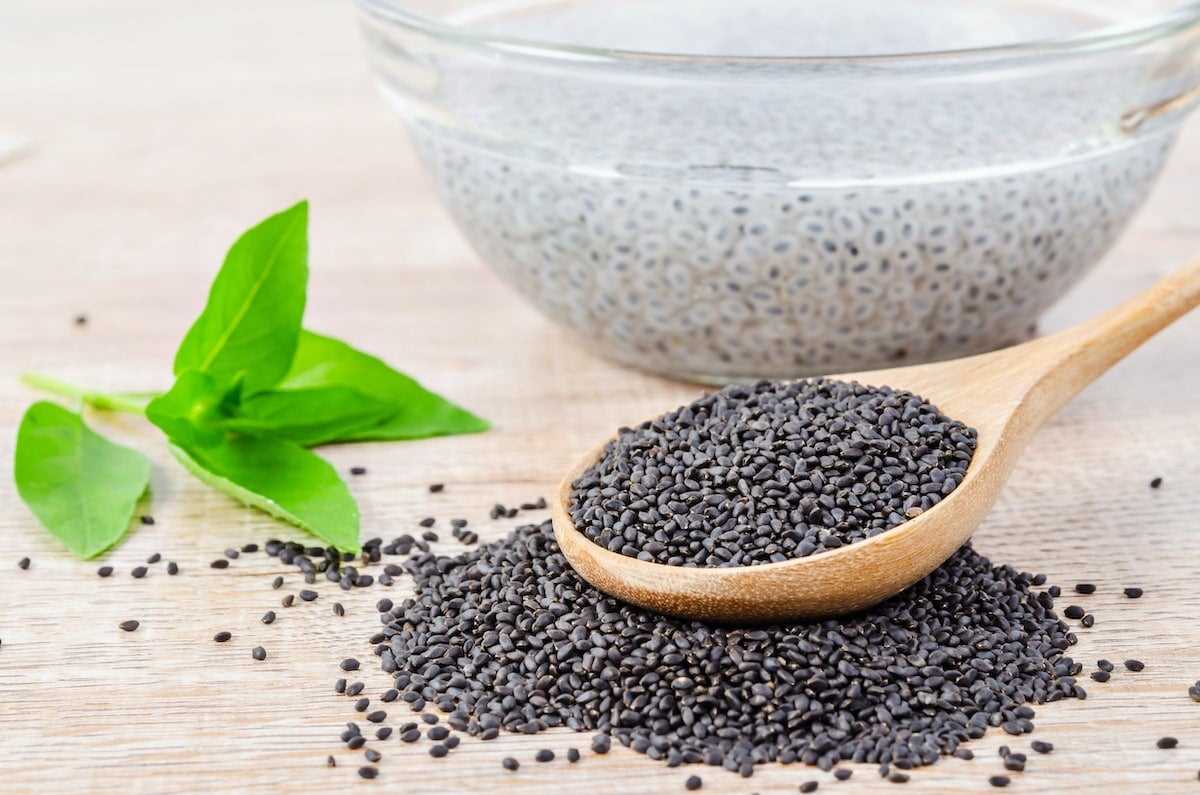
The improved germination rates and accelerated development achieved by sowing soaked basil seeds can ultimately result in a higher survival rate for seedlings. The stronger and more robust seedlings have a higher chance of surviving and thriving in various growing conditions. This can be particularly beneficial for gardeners who face challenging climates or limited gardening space.
Easier Transplantation
Sowing soaked basil seeds can also make transplanting seedlings easier. The accelerated development of the seedlings means they are more likely to reach transplant size sooner. This allows gardeners to transplant them into larger pots or garden beds earlier, providing them with more room for root development and better overall growth.
Conclusion
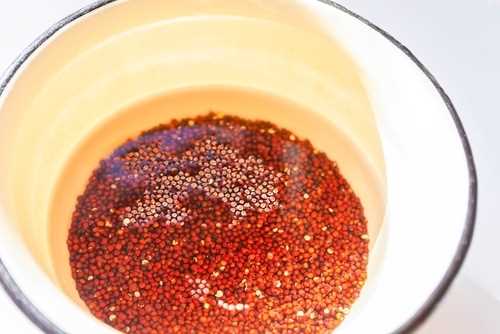
Sowing soaked basil seeds offers several benefits that can enhance the growing experience and maximize the chances of success. By improving germination rates, accelerating seedling development, increasing seedling survival rates, and making transplantation easier, soaked basil seeds can contribute to the optimal growth of basil plants.
Understanding Soaked Seeds and Their Importance in Basil Growth
Soaked seeds refer to the process of immersing basil seeds in water before sowing them. This unique approach has been found to significantly enhance the growth and overall health of basil plants. Understanding the importance of soaked seeds can help gardeners achieve optimal results in their basil cultivation.
Why soak basil seeds?
Soaking basil seeds prior to sowing serves several important purposes:
- Enhanced germination: Soaking seeds softens the seed coat, allowing for easier and quicker germination. This helps the seeds sprout faster and ensures a higher germination rate.
- Increased nutrient absorption: Soaking seeds activates enzymes and releases nutrients, making them more available to the emerging seedling. This provides the young basil plant with an initial nutrient boost, promoting healthy growth.
- Improved moisture retention: Soaked seeds absorb water, which helps them retain moisture during the early stages of growth. This reduces the risk of seedlings drying out and increases their chance of survival.
How to soak basil seeds?
Soaking basil seeds is a simple and straightforward process:
- Measure the seeds: Determine the desired amount of basil seeds for sowing.
- Prepare a container: Use a clean bowl or cup to hold the seeds and water.
- Add water: Pour room temperature water into the container, using sufficient water to cover the seeds adequately.
- Soak the seeds: Place the basil seeds into the water and let them soak for approximately 8-12 hours.
- Drain the seeds: After the soaking period, pour out the water, leaving behind the soaked seeds.
Important considerations
While soaking basil seeds can be beneficial, it’s essential to keep a few things in mind:
- Timing: Soak the seeds shortly before sowing to prevent them from drying out or sprouting prematurely.
- Water temperature: Use room temperature water for soaking, as extreme temperatures can potentially harm the seeds.
- Length of soaking: For basil seeds, soaking for 8-12 hours is generally sufficient. Avoid over-soaking, as this can lead to seed damage.
By understanding the importance of soaked seeds and following the proper soaking process, gardeners can give their basil plants the best chance of thriving and producing abundant foliage and flavorful leaves.
The Science Behind Soaking Basil Seeds for Better Germination
Soaking basil seeds before sowing them can greatly improve their germination rate and overall growth. This technique is based on the scientific understanding of the seeds’ biology and their response to water.
1. Increased Water Absorption
Seeds are dormant structures that contain all the necessary nutrients for the plant’s initial growth. However, before they can access these nutrients, the seeds need to absorb water to initiate the germination process. Soaking basil seeds allows them to absorb a sufficient amount of water, making it easier for them to break through the hard seed coat and begin sprouting.
2. Activation of Enzymes
When basil seeds are soaked, it triggers the activation of various enzymes within the seed. These enzymes play a crucial role in breaking down complex molecules, such as proteins and carbohydrates, into simpler forms that can be easily utilized by the growing plant. This enzymatic activity is essential for providing energy and nutrients for the seedling’s development.
3. Release of Hormones
Soaking basil seeds stimulates the release of certain hormones, such as gibberellins, which are responsible for promoting seed germination. These hormones help to break seed dormancy and initiate the growth process. By soaking the seeds, you are providing them with an optimal environment for hormone release, increasing the chances of successful germination.
4. Softening of Seed Coat
The seed coat of basil seeds can be quite hard and impermeable to water. Soaking the seeds helps to soften this outer layer, allowing water to penetrate more easily and reach the embryo inside. This softening process also aids in the expansion of the seed coat, making it easier for the emerging seedling to push through during germination.
5. Reduction of Seed-Borne Diseases
Soaking basil seeds in water can help to remove any pathogens or seed-borne diseases that may be present on the seed’s surface. Water acts as a natural cleanser, washing away potential sources of infection and increasing the chances of producing healthy seedlings.
The science behind soaking basil seeds highlights the importance of providing the seeds with an optimal environment for germination. By using this technique, you can maximize the chances of successful seed germination and enhance the overall growth and development of your basil plants.
Step-by-Step Guide: How to Soak Basil Seeds for Maximum Growth
1. Gather the Materials:
Before you start soaking your basil seeds, make sure you have the following materials:
- Basil seeds
- A bowl or container
- Fresh, clean water
- Clear plastic wrap or a lid
- A warm, dark place
2. Choose the Right Seeds:
When selecting basil seeds for soaking, it’s important to choose fresh and high-quality seeds. Look for seeds that are dark in color, as these tend to be the most viable.
3. Measure the Seeds:
Take a tablespoon or measuring spoon and measure the desired amount of basil seeds. It’s recommended to start with a small amount, such as 1 tablespoon, especially if you’re new to soaking seeds.
4. Place the Seeds in a Bowl:
Transfer the measured basil seeds into a bowl or container. Make sure the container is clean and free from any dirt or debris.
5. Add Water:
Pour fresh, clean water into the bowl, covering the seeds completely. Use double the amount of water for the amount of seeds you measured. For example, if you used 1 tablespoon of seeds, pour in 2 tablespoons of water.
6. Stir and Soak:
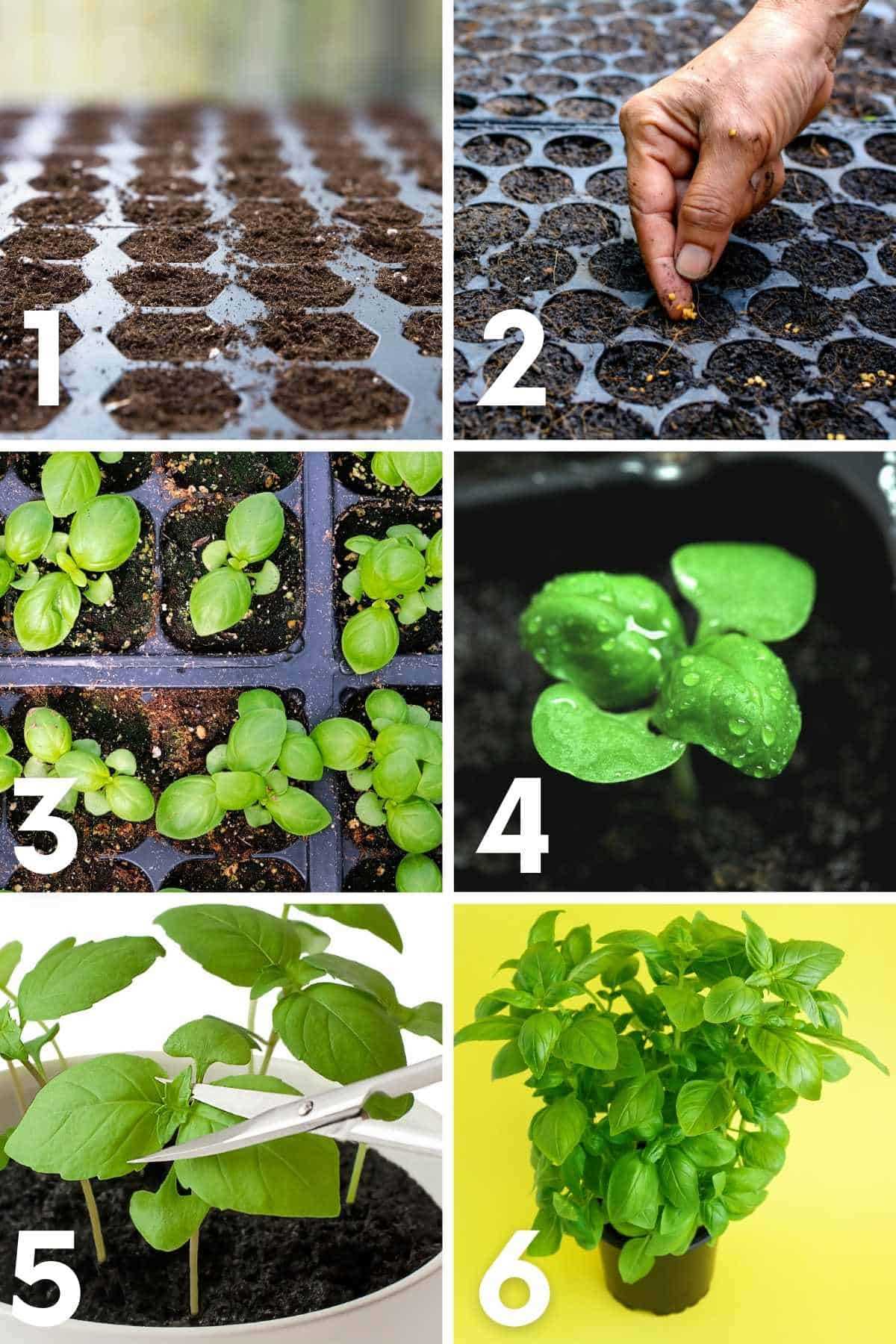
Gently stir the seeds in the water to ensure they are soaked evenly. Let the seeds soak for about 6-8 hours, or overnight. This will allow the seeds to absorb water and begin the germination process.
7. Drain the Water:
After the soaking period, pour the water out of the bowl. Use a fine-mesh strainer or cheesecloth to catch any seeds that may come out with the water.
8. Rinse the Seeds:
Rinse the soaked basil seeds with fresh water to remove any leftover debris or residue. Use the strainer or cheesecloth to ensure you don’t lose any seeds in the process.
9. Prepare for Germination:
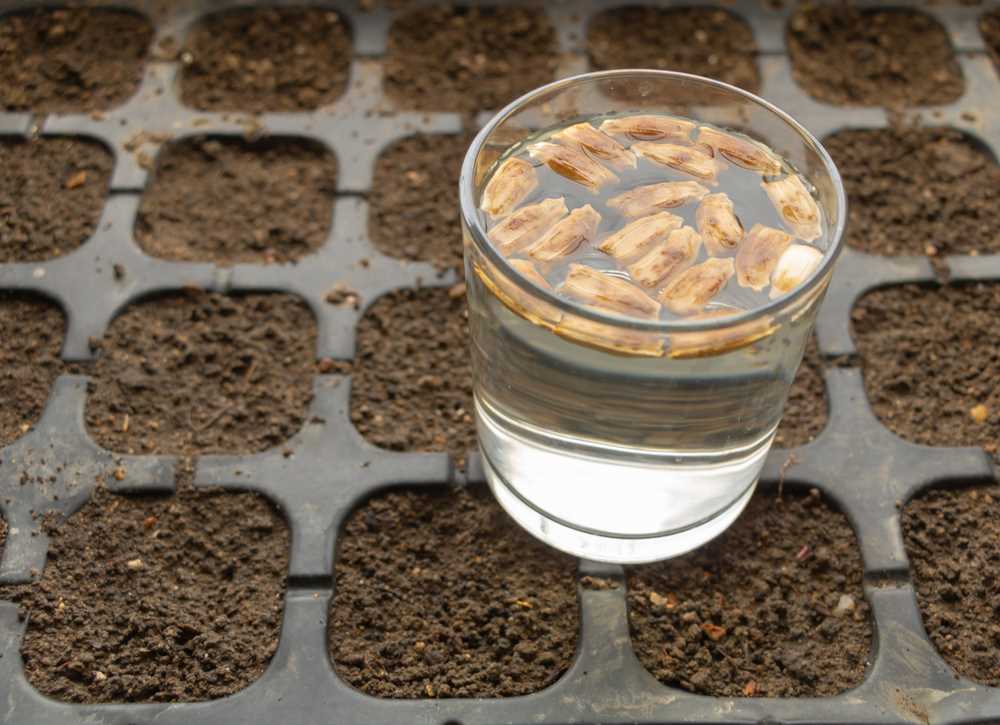
Place the rinsed basil seeds back into the clean bowl. Cover the bowl with clear plastic wrap or a lid to create a warm, dark environment.
10. Germinate the Seeds:
Put the covered bowl in a warm, dark place, such as a kitchen cabinet or closet. This will provide the optimal conditions for the basil seeds to germinate and sprout.
11. Check Daily:
Check on the seeds daily to ensure they are not drying out. If needed, lightly mist the seeds with water to keep them moist. Avoid overwatering, as this can lead to fungal growth.
12. Transfer to Soil:
Once the seeds have sprouted and developed small roots, it’s time to transfer them to soil. Gently plant the sprouted seeds in moist potting mix, ensuring they are covered lightly with soil.
13. Provide Care:
Place the potted basil plants in a sunny location and water them regularly to encourage healthy growth. Within a few weeks, you’ll have lush and thriving basil plants ready to be used in your culinary adventures!
| Tip 1: | Soaking basil seeds can help speed up the germination process and promote healthier plant growth. |
| Tip 2: | Make sure the environment is warm and dark during the soaking and germination stages to mimic natural conditions. |
| Tip 3: | Don’t oversoak the seeds as they may become waterlogged and fail to germinate. |
| Tip 4: | Experiment with different soaking times and amounts of seeds to find what works best for you and your growing conditions. |
Tips and Tricks for Successful Basil Seed Soaking
When it comes to sowing basil seeds, soaking them beforehand can greatly improve their chances of successful germination and optimal growth. Here are some tips and tricks to help you get the most out of your basil seed soaking process:
1. Use Filtered Water
For optimal results, it is recommended to use filtered or distilled water for soaking basil seeds. This helps to remove any impurities or chemicals that may hinder germination.
2. Soak Seeds in a Glass or Container
Choose a glass or container that is wide enough to hold the seeds and water comfortably. Avoid using metal containers, as they may react with the water and affect the seeds’ germination.
3. Adjust Soaking Time
The soaking time for basil seeds can vary depending on the age and quality of the seeds. As a general rule, soak the seeds for about 8-12 hours. This allows them to absorb enough water without becoming waterlogged.
4. Monitor Water Temperature
The ideal water temperature for basil seed soaking is around 70-75°F (21-24°C). Using water that is too hot or too cold can have a negative impact on germination. Use a thermometer to check the water temperature if necessary.
5. Add Nutrients (Optional)
If you want to give your basil seeds an extra boost, you can add a diluted nutrient solution to the soaking water. This can help provide essential nutrients for early growth. Be sure to follow the manufacturer’s instructions and use a gentle, organic fertilizer.
6. Keep the Soaking Area Warm
Basil seeds require warmth for germination. To create an ideal environment, place the glass or container in a warm spot, such as near a sunny window or on top of a seedling heat mat. This helps to promote faster and more uniform germination.
7. Rinse the Seeds
After the soaking period is complete (usually 8-12 hours), rinse the basil seeds thoroughly with fresh water to remove any residue or impurities. This helps to ensure clean, healthy germination.
8. Lightly Pat Dry
After rinsing, gently pat the soaked basil seeds dry with a clean paper towel. Avoid rubbing or pressing too hard, as this can damage the delicate seeds.
9. Sow Immediately
Once the basil seeds are soaked and dried, it is best to sow them immediately. This allows them to take advantage of the moisture and nutrients absorbed during soaking.
By following these tips and tricks, you can increase the chances of successful basil seed soaking and enjoy healthier, more robust basil plants. Happy gardening!
The Ideal Conditions for Sowing Soaked Basil Seeds
When sowing soaked basil seeds, it is important to create the ideal conditions for optimal growth. Basil seeds have specific requirements for germination, and ensuring the right conditions will increase the chances of success.
Moisture
Moisture is crucial for basil seeds to germinate and grow. When sowing soaked basil seeds, it is important to maintain a consistently moist environment throughout the germination period. This can be achieved by using a well-draining soil mix that retains moisture without becoming waterlogged. Regularly misting the soil can also help to maintain the desired moisture levels.
Temperature
Temperature plays a vital role in basil seed germination. Basil seeds require warm conditions to break their dormancy and sprout. The ideal temperature for basil seed germination is between 70°F (21°C) and 85°F (29°C). Using a heating mat or placing the seeds in a warm location can help maintain the required temperature.
Light
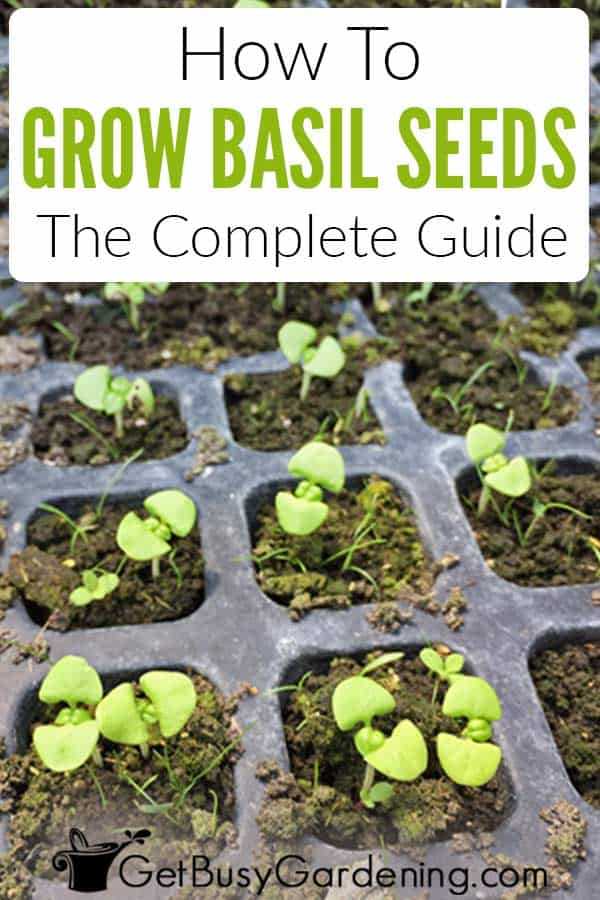
Light is an essential factor for basil seed germination. Basil seeds require sufficient light to trigger the growth process. When sowing soaked basil seeds, it is important to place them in a location that receives adequate sunlight or use artificial lighting to provide the necessary light intensity. Ideally, the seeds should receive 12-16 hours of light per day.
Spacing
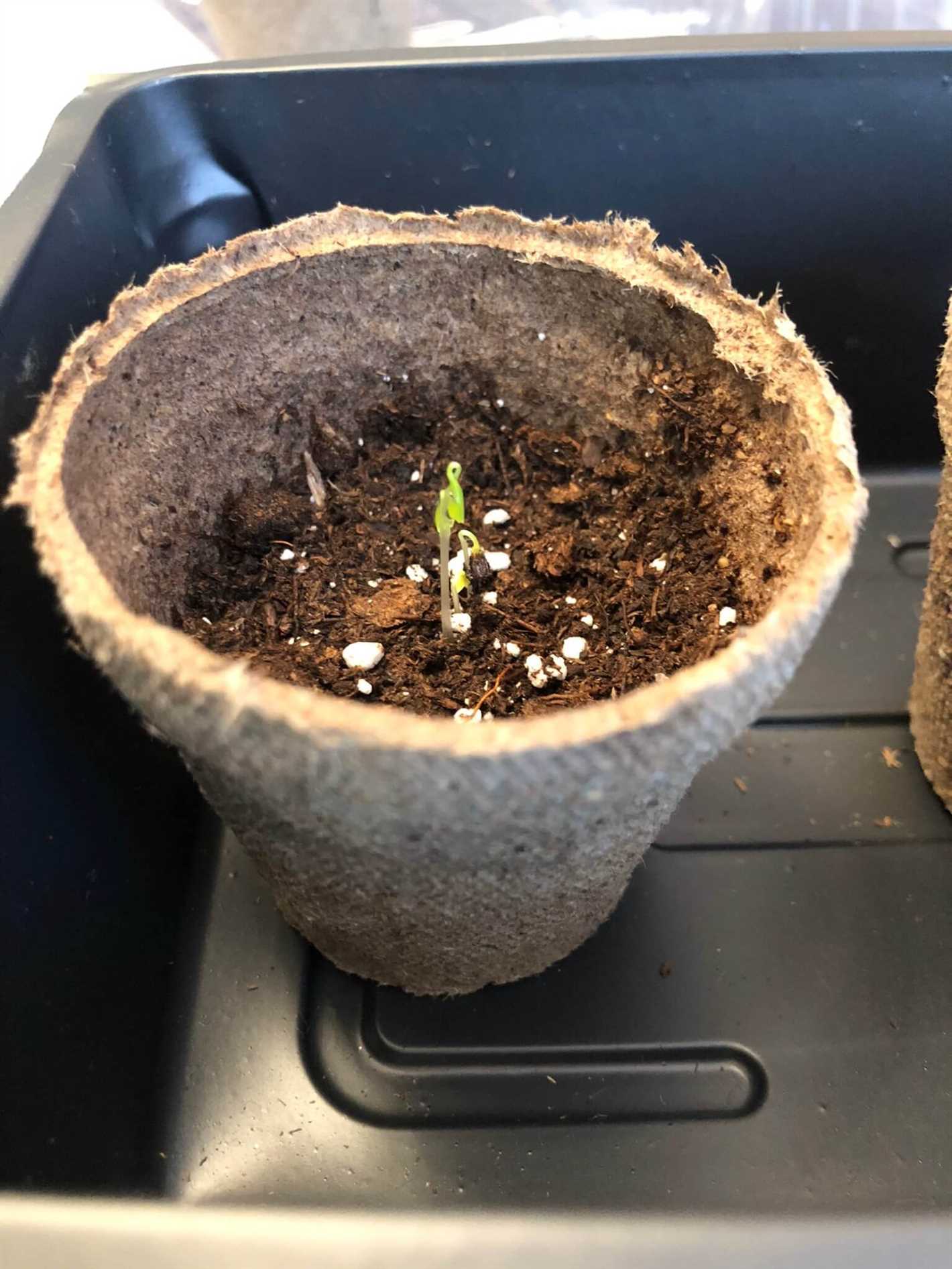
Proper spacing is essential for the healthy growth of soaked basil seeds. When sowing the seeds, it is important to provide enough space between them to allow for proper air circulation and minimize competition for resources. A general rule of thumb is to space the seeds 2-3 inches apart.
Nutrients
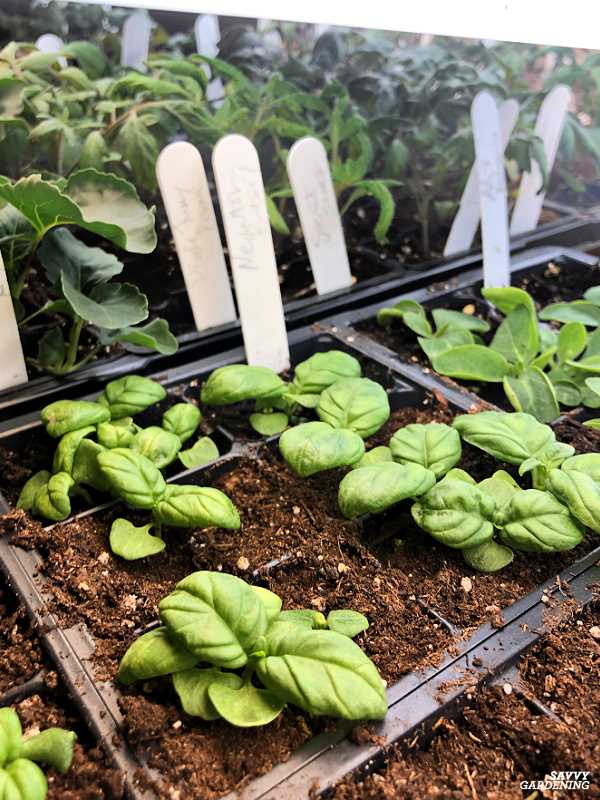
Basil seeds require a nutrient-rich growing medium for optimal growth. Before sowing soaked basil seeds, it is important to prepare the soil by incorporating organic matter or compost into the growing area. This will provide the seeds with the necessary nutrients to support healthy growth.
Pests and Diseases
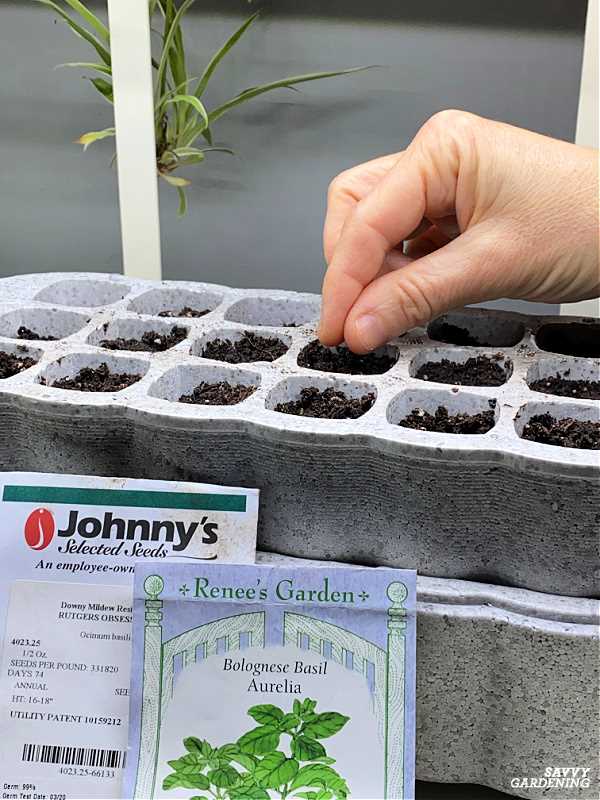
When sowing soaked basil seeds, it is important to be mindful of potential pests and diseases. Basil plants are susceptible to certain pests, such as aphids and whiteflies, as well as diseases like fungal infections. Regularly inspecting the plants and taking appropriate measures, such as using organic pest control methods or practicing crop rotation, can help prevent infestations and diseases.
Conclusion
By providing the ideal conditions for sowing soaked basil seeds, such as maintaining proper moisture levels, temperature, light, spacing, and nutrient availability, you can ensure optimal growth and increase the chances of successful germination. Taking preventive measures against pests and diseases will further contribute to healthy basil plants.
Comparing Soaked Basil Seeds to Dry Seeds: Which is Better?
When it comes to growing basil, many gardeners debate whether it’s better to sow soaked basil seeds or dry seeds. Both methods have their own advantages and can lead to successful growth, but there are a few key differences to consider.
Soaked Basil Seeds
Sowing soaked basil seeds involves soaking the seeds in water before planting them. This method is believed to help speed up the germination process and increase the overall success rate of growing basil.
- Soaking the seeds softens the seed coat, making it easier for the basil seedling to emerge.
- Soaked seeds may have a higher germination rate compared to dry seeds.
- Soaking can also help remove any inhibitors or chemicals that may prevent germination.
Dry Basil Seeds
On the other hand, sowing dry basil seeds is the traditional method that has been used for centuries. While it may take longer for the seeds to germinate, it can still lead to successful growth.
- Dry seeds are easier to handle and plant, as they are not soaked and do not have excess moisture.
- Some gardeners believe that dry seeds result in stronger and more resilient basil plants.
- Dry seeds may have a longer shelf life compared to soaked seeds.
Which is Better?
The choice between soaked basil seeds and dry seeds ultimately depends on the preferences and experience of the gardener. Both methods can be successful, but it’s important to consider the specific conditions and goals of your basil growing project.
If you want to speed up the germination process and potentially increase the success rate, sowing soaked basil seeds may be worth trying. However, if you prefer a more traditional approach and are willing to wait for the seeds to germinate naturally, dry seeds may be the better option for you.
Regardless of which method you choose, it’s important to provide optimal growing conditions for your basil plants, including proper soil, sunlight, and watering.
Common Mistakes to Avoid when Sowing Soaked Basil Seeds
- Using the wrong soil: One common mistake when sowing soaked basil seeds is using the wrong type of soil. Basil seeds require well-draining soil that is rich in organic matter. Avoid using heavy clay soils as they can retain too much moisture, leading to root rot.
- Not soaking the seeds for the right amount of time: Soaking basil seeds before sowing is essential to promote germination. However, it’s crucial to soak the seeds for the right amount of time. Over-soaking can cause the seeds to rot, while under-soaking may result in poor germination rates.
- Sowing seeds too deeply: Basil seeds are small and should be sown close to the soil surface. Planting them too deep can hinder germination and prevent sunlight from reaching the seedlings. Aim for a depth of no more than 1/4 inch when sowing basil seeds.
- Overwatering: While basil seeds require moisture to germinate, overwatering can be detrimental to their growth. Excess water can lead to damping-off disease and root rot. It’s important to keep the soil consistently moist, but not waterlogged.
- Not providing enough light: Basil is a sun-loving plant and requires at least 6-8 hours of direct sunlight a day. Insufficient light can lead to leggy, weak seedlings. If growing indoors, ensure the seedlings have access to bright, indirect light or use supplemental grow lights.
- Not thinning seedlings: Basil seedlings can become overcrowded if not properly thinned. Overcrowding leads to competition for resources and can result in stunted growth. It’s important to thin the seedlings once they develop their first set of true leaves, leaving the strongest plants to grow.
Avoiding these common mistakes when sowing soaked basil seeds can help ensure optimal growth and a successful harvest. By providing the right conditions and care, you can enjoy a bountiful supply of fresh basil throughout the growing season.
Testimonials and Success Stories from Gardeners who Sow Soaked Basil Seeds
Here are some testimonials and success stories from gardeners who have tried sowing soaked basil seeds using our unique approach:
John D.
After trying out the soaked basil seed method, I have seen a significant improvement in the growth and health of my basil plants. The seeds germinated faster, and the resulting plants had larger leaves that were more aromatic. I am thrilled with the results and will continue to use this method for future basil crops.
Sarah M.
I had been struggling to get my basil seeds to germinate properly until I came across the soaked seed technique. Since then, I have had a near 100% germination rate with my basil seeds. The plants are growing vigorously and have a beautiful vibrant green color. It’s amazing how such a simple step can make such a big difference in the success of my basil garden.
Robert S.
I was skeptical at first when I heard about soaking basil seeds before planting, but I decided to give it a try. I must say, I am pleasantly surprised by the results. The soaked seeds sprouted much faster than the ones I used to plant directly in the soil. The basil plants are now thriving, and I have an abundance of fresh basil to use in my cooking. I highly recommend this method to fellow gardeners.
These testimonials and success stories show the positive impact that sowing soaked basil seeds can have on the growth and yield of basil plants. If you want to achieve optimal growth and flavor in your basil garden, give this unique approach a try!
“Question-Answer”
Why should I soak basil seeds before sowing them?
Soaking basil seeds before sowing them helps to speed up germination. It also softens the seed coat, making it easier for the seed to absorb water and nutrients.
How long should I soak basil seeds for?
It is recommended to soak basil seeds for 24 to 48 hours before sowing. This gives the seeds enough time to fully absorb water and activate the germination process.
What is the best method for soaking basil seeds?
The best method for soaking basil seeds is to place them in a container with clean, room temperature water. Make sure the seeds are fully submerged and leave them to soak for the recommended time.
Can I sow basil seeds without soaking them?
Yes, you can sow basil seeds without soaking them, but soaking can help to improve germination rates and overall growth. It is especially beneficial for older seeds or seeds with a hard seed coat.
What are the signs that basil seeds are ready to be sown after soaking?
After soaking basil seeds, you will notice that they have increased in size and may have a gel-like coating around them. These are both signs that the seeds are ready to be sown.
Can I use any type of water for soaking basil seeds?
It is recommended to use clean, room temperature water for soaking basil seeds. Avoid using chlorinated or heavily treated water, as it may have negative effects on the seeds.







